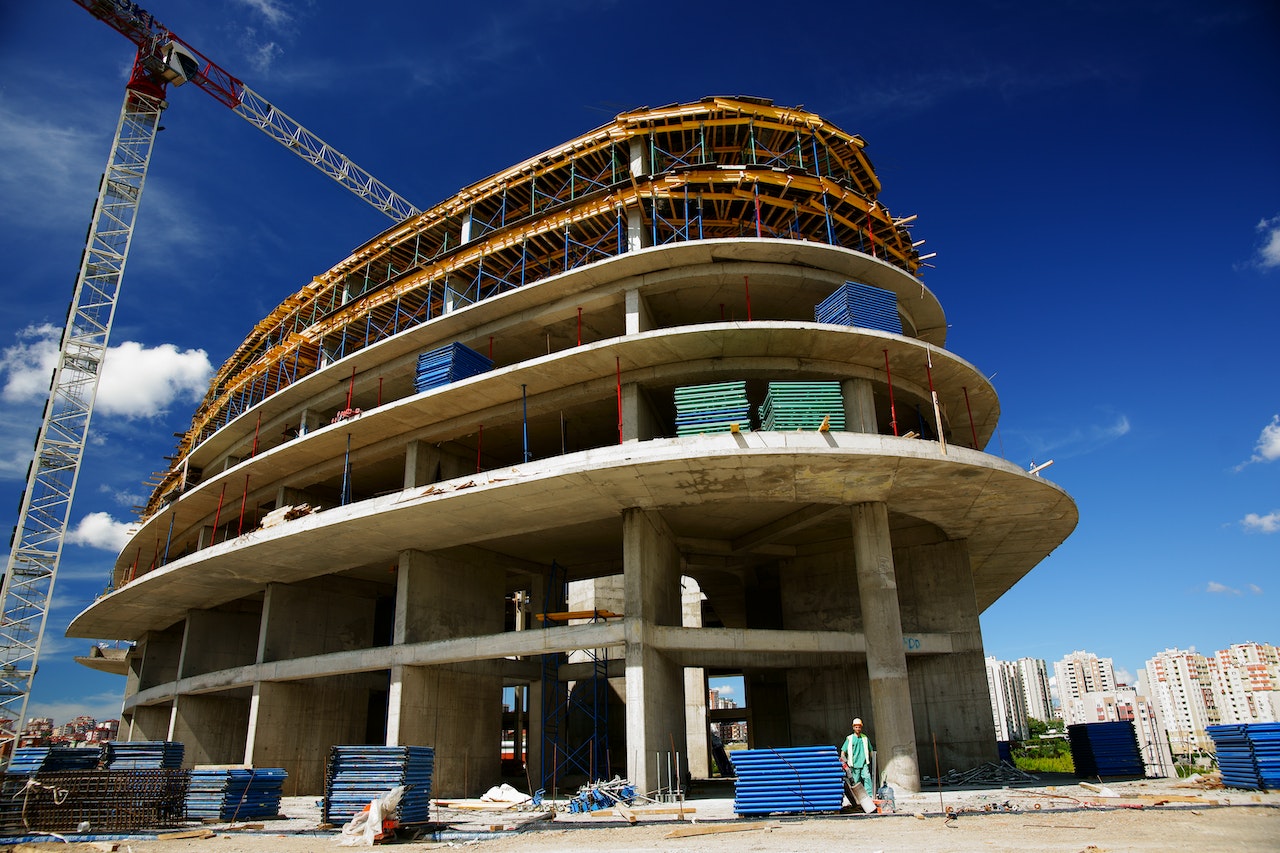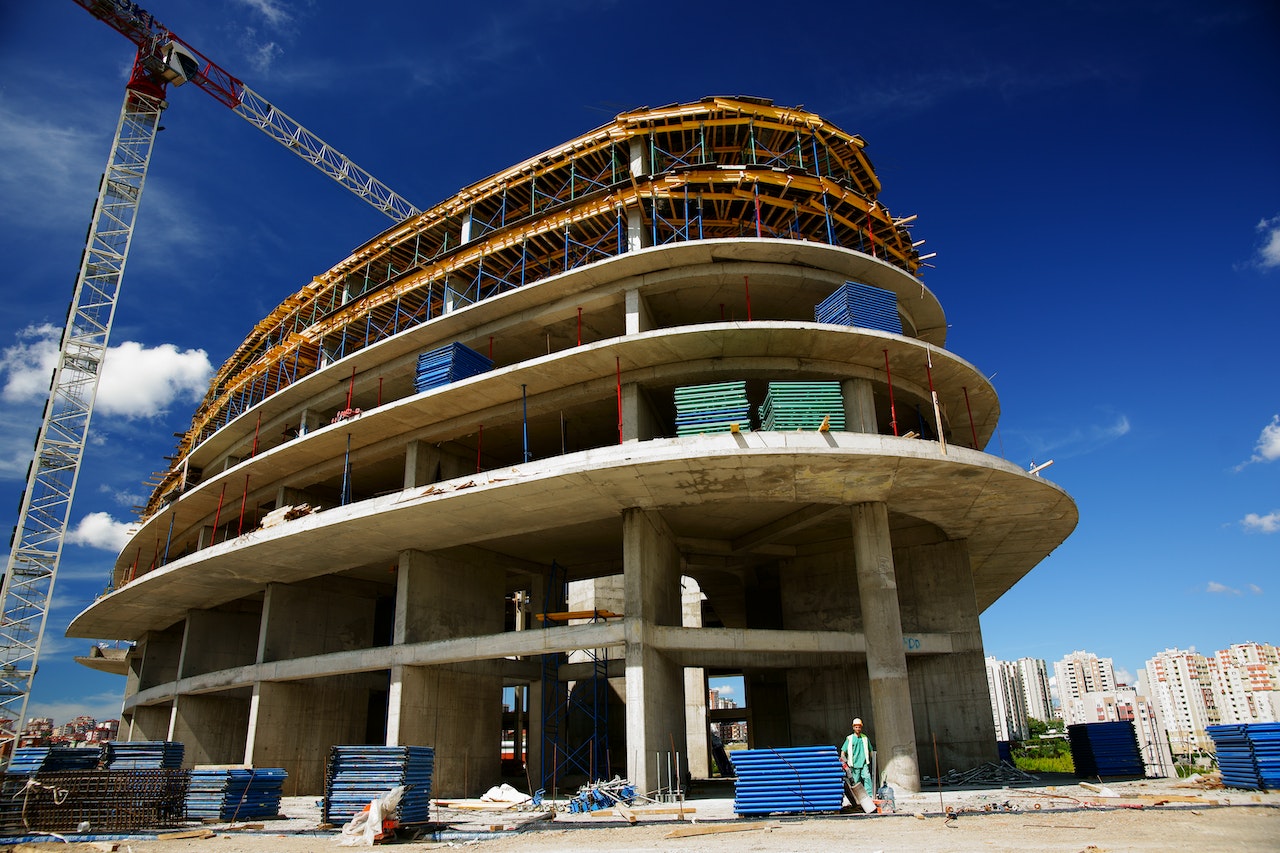In the world of construction, the choice between steel structures and reinforced concrete structures is crucial. Both materials offer unique advantages, but they also have their own disadvantages.
To make an informed decision, it is important to understand the differences, benefits and limitations of each option.
In this comprehensive article, we look at the comparison between steel structures and reinforced concrete structures and compare them in terms of durability, cost-effectiveness, sustainability, architectural flexibility, aesthetics and more. So let's dive in!
Steel structure
Steel structures are known for their strength and versatility. They are made of steel columns, beams and frames and offer exceptional load-bearing capacity.
Steel is an alloy composed mainly of iron and carbon, with small amounts of other elements such as manganese, silicon and phosphorus.
Steel Properties
Before we delve into the details, let's take a closer look at the properties of steel. Steel is praised for its high tensile strength, which allows it to withstand high structural loads and stresses.
Plus, it's incredibly elastic, meaning it can deform under pressure without breaking. These properties make it the first choice for construction purposes in various applications.
Structural steel is a widely used construction material known for its exceptional properties and versatility in various construction applications. Here are some important properties of structural steel:
- High strength : Structural steel has high tensile strength, which allows it to withstand high loads and tensions. This property allows the construction of large and tall structures.
- Ductility : Steel is ductile, meaning it can be easily shaped and bent without breaking. This makes it suitable for various shapes and configurations in construction.
- Durability : Structural steel is extremely resistant to environmental influences such as corrosion, rust and deterioration. This durability ensures that steel structures last a long time and require minimal maintenance.
- Fire resistance : Although steel is not completely fireproof, it has excellent fire resistance properties. It maintains its structural integrity at high temperatures, which is essential for safety during building fires.
- Economically : Steel is an economical building material due to its high strength-to-weight ratio. It allows the creation of lighter and more efficient structures, thus reducing material and labor costs.
- Versatility : Steel is easily adaptable to various architectural designs and construction requirements. It can be prefabricated and customized according to specific project requirements.
- Recyclability : Steel is one of the most recycled materials in the world and contributes to sustainability in construction. It can be reused without loss of quality, reducing the environmental impact of the works.
- Consistency : Structural steel is manufactured to strict industry standards to ensure uniformity of material properties and quality.
- Resilience : Steel structures can withstand extreme weather conditions such as earthquakes and hurricanes due to their flexibility and strength.
- Light : Despite its strength, steel is relatively light compared to other building materials such as concrete or wood. This feature simplifies transportation and assembly at the construction site.
- Construction Speed : Steel structures often involve prefabrication, which allows for faster assembly and shorter construction times compared to traditional methods.
- Design flexibility : Steel's versatility allows architects and engineers to create innovative and complex structures, including large spans, curved shapes and cantilevered structures.
- sustainability : Steel's recyclability, as well as its long lifespan and energy-efficient properties make it an environmentally friendly choice for construction projects.
- Low maintenance effort : Steel structures require minimal maintenance throughout their service life, reducing ongoing costs for building owners.
- High quality finishes : Steel surfaces can be finished with different coatings, colors and textures according to aesthetic requirements.
Reinforced concrete structures
Reinforced concrete structures, on the other hand, are a combination of concrete and steel. Concrete, a mixture of cement, water and aggregates, provides compressive strength, while steel reinforcing bars (rebar) provide tensile strength to the structure.
Reinforced concrete structures are very popular around the world because they are easy to use in construction and have a high load-bearing capacity compared to other building materials.
Concrete elements are more stable and durable than steel. They can withstand harsh environments.
The fusion of concrete and steel in reinforced concrete structures creates a material that can withstand compressive and tensile forces. This combination has revolutionized the construction industry and offers a versatile solution for architects and engineers.


Resistance and durability
- Steel structure
Steel structures are incredibly strong and have high tensile strength, making them suitable for tall buildings, bridges and industrial facilities.
They are earthquake resistant and can withstand extreme weather conditions, making them a popular choice for areas where natural disasters are common.
- The strength of steel
Steel's ability to withstand extreme conditions sets it apart in the construction world.
From skyscrapers that touch the clouds to bridges that span vast rivers, steel's strength and durability are unmatched.
When the world looks at an imposing structure, it is often the steel that holds it together.
- Reinforced concrete structures
Reinforced concrete structures offer excellent compressive strength and are therefore ideal for buildings and structures where such high tensile strength is not required.
However, its resistance in seismic zones may not be as high as that of steel structures.
- The concrete fortress
Steel-reinforced concrete becomes a fortress against compressive forces.
It is the preferred material for many residential and commercial buildings.
However, it faces a formidable opponent in the form of earthquakes, which can affect its performance.
Cost effectiveness
Steel structure
Although steel structures are durable, their initial construction costs can be higher than those of reinforced concrete structures.
However, their durability and low maintenance costs often make them an economical choice in the long term.
- The initial investment
Investing in metal structures may initially seem like a significant financial commitment.
The steel itself, as well as skilled labor for welding and forming, contribute to the initial cost.
The key, however, is to view this as an investment in long-term stability.
- Long-term profits
Steel structures are characterized by a longer service life with minimal maintenance.
They are not subject to the same wear and tear as other materials, which makes them a smart choice for those looking beyond the immediate horizon.
Reinforced concrete structures
Purchasing reinforced concrete structures is usually more economical, especially for low-rise buildings.
However, ongoing maintenance and repair costs can be higher because concrete is subject to cracking and wear over time.
- The economic entry
Concrete offers an economical start to construction projects, especially in residential construction and smaller construction projects.
Initial construction costs are often lower, which can be attractive to cost-conscious developers.
- The maintenance challenge
Concrete's Achilles heel is its susceptibility to cracking and aging over time.
To ensure the longevity of concrete structures, regular maintenance and repairs are essential, which can lead to higher costs in the long term. However, it does not require the same attention as metallic structures.


sustainability
Steel structure
Steel is highly recyclable, making steel structures an environmentally friendly option. Additionally, steel construction processes have become more energy efficient over the years, reducing their carbon footprint.
The environmental compatibility of steel is a huge advantage for environmentally conscious builders. The ability to recycle steel reduces the need for new raw materials, conserves natural resources and reduces waste.
Reinforced concrete structures
Due to the energy-intensive cement manufacturing process, concrete production can have a significant impact on the environment.
However, advances in sustainable concrete mixes and construction techniques are improving the environmental performance of reinforced concrete structures.
The environmental impact of concrete arises mainly from the production of cement, which releases significant amounts of carbon dioxide into the atmosphere.
However, ongoing research into alternative, greener methods of cement production promises to reduce the environmental footprint.
Architectural flexibility
Steel structure
Steel's high strength-to-weight ratio allows for open, spacious interior designs. Architects can use it to create unique and innovative structures with large spans and minimal supports.
Architects love the canvas that steel provides. The ability to span large spaces with less intrusive columns allows for impressive designs, both in terms of aesthetics and functionality.
However, side supports are necessary, especially at the edges of the building, which obstruct the windows. They can also be handled more intelligently.
Reinforced concrete structures
Although impressive architectural designs can also be achieved with reinforced concrete, it may require more columns and supports compared to steel structures, limiting interior flexibility.
The inherent properties of concrete often require a greater number of columns, potentially affecting the design and aesthetics of the building's interior. However, through creative design, this limitation can be alleviated to some extent.
In the ongoing battle between steel structures and reinforced concrete structures, there is no one-size-fits-all answer. The choice depends on several factors, including specific project requirements, budget, location and sustainability objectives.
Steel structures are characterized by their strength and durability, making them ideal for skyscrapers and critical infrastructures. On the other hand, reinforced concrete structures offer economical solutions for a variety of construction types.
Ultimately, the decision should be based on a thorough assessment of the project's needs and objectives. Regardless of the material chosen, it is important to work with experienced engineers and architects who can streamline the design and construction process.
Common questions
Q1: Which is more earthquake resistant: steel or reinforced concrete structures?
Both steel and reinforced concrete structures can be designed to be earthquake resistant. The choice depends on factors such as seismic activity in the area and specific structural requirements.
Q2: Are steel structures more sustainable than reinforced concrete structures?
Metallic structures have a higher recycling rate, but the sustainability of each material depends on factors such as the origin of the material and construction practices.
Q3: Can steel structures be as aesthetically pleasing as reinforced concrete structures?
Yes, steel structures can be designed very aesthetically and offer architectural flexibility similar to reinforced concrete structures.
Q4: Which material is most suitable for residential buildings?
Due to their cost-effectiveness and ease of construction of low-rise buildings, reinforced concrete structures are often preferred for residential buildings.
Q5: What is the service life of steel structures compared to reinforced concrete structures?
With proper maintenance, both steel and reinforced concrete structures can last a long time. Concrete structures may require less maintenance over time.
Q6: Are there notable architectural landmarks made of steel or reinforced concrete?
Yes, there are many iconic buildings made from both materials. The Eiffel Tower in Paris is a famous steel structure, while the Hoover Dam in the United States is a notable example of a reinforced concrete structure.
Q7: How does the weight of steel and concrete affect the construction process?
The lighter weight of steel compared to concrete can simplify the construction process, especially in terms of transportation and assembly. The weight of concrete may require more extensive support systems during construction.
Q8: Can steel and concrete be used together in a single structure?
Yes, it is possible to use both materials in a hybrid structure. This approach allows designers to leverage the strengths of each material for specific parts of a building.
Q9: Are there any notable disadvantages to using steel or concrete in construction?
Steel is susceptible to corrosion, while concrete can crack over time. To avoid these problems, proper maintenance is essential. Furthermore, purchasing steel can be more expensive and the production of concrete has an impact on the environment.
Q10: What impact does technology have on the use of steel and concrete in the construction industry?
Technological advances have led to more efficient construction methods for steel and concrete structures. Computer-aided design and engineering software have improved the accuracy and safety of construction processes.
Additionally, innovations in materials science have led to the development of stronger, more sustainable technologies. Construction material .

